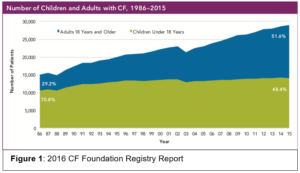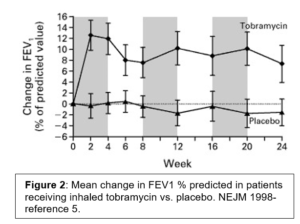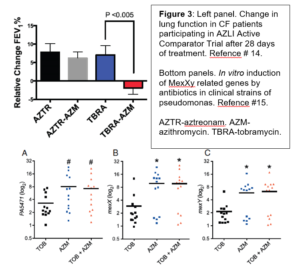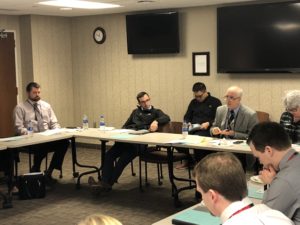Pharm To Exam Table: Dual Antiretroviral Therapy with Dolutegravir + Lamivudine
Currently, triple therapy regimens constituted with a two nucleoside reverse transcriptase inhibitor backbone and anchored by an integrase inhibitor has been the standard treatment for HIV infection. However, these conventional therapies are being challenged due to their long-term side effects. Dual therapy regimens were recently introduced with the first comprising of dolutegravir (DTG)/rilpivirine (RPV). The combination was approved under the trade name JULUCA® in the setting of antiretroviral therapy (ART) switch cases for maintenance of viral suppression. Current trials are ongoing to support dual therapy for patients who are treatment naïve or experienced. DTG 50mg paired with lamivudine (3TC) 300mg has been introduced as a potential option for dual therapy. The agents of interest offer an array of advantages when compared to the conventional triple therapy. DTG is a potent agent exhibiting a high genetic barrier to drug resistance and 3TC offers a complimentary agent with low toxicity. In addition, the potential for drug-drug interactions is minimal with DTG/3TC.
A number of studies have released data in which they assess the practicality of dual antiretroviral therapy with DTG/3TC. Below, is a summary of such studies:
 PADDLE Trial4: A pilot, non-blinded, non-randomized, non-parallel, 48 week trial in Argentina. This trial enrolled 20 patients that were naïve to ART, viral loads ranging from 5,000 to 100,000 copies/mL and CD4+ greater 200cells/mm3. The participants in this trial were primarily assessed to see the rate of success at achieving HIV levels of 50 copies/mL or less at 48 weeks. At 48 weeks, 18/20 (90%) patients reached the viral levels desired, including 4 patients with viral loads greater than 100,000 (albeit to protocol). Additionally, safety and efficacy of this dual therapy was analyzed in this trial. Only one protocol failure developed; however, participants achieved levels less than 50 copies/mL from Week 4-24 and developed no resistance to any of the agents.
PADDLE Trial4: A pilot, non-blinded, non-randomized, non-parallel, 48 week trial in Argentina. This trial enrolled 20 patients that were naïve to ART, viral loads ranging from 5,000 to 100,000 copies/mL and CD4+ greater 200cells/mm3. The participants in this trial were primarily assessed to see the rate of success at achieving HIV levels of 50 copies/mL or less at 48 weeks. At 48 weeks, 18/20 (90%) patients reached the viral levels desired, including 4 patients with viral loads greater than 100,000 (albeit to protocol). Additionally, safety and efficacy of this dual therapy was analyzed in this trial. Only one protocol failure developed; however, participants achieved levels less than 50 copies/mL from Week 4-24 and developed no resistance to any of the agents.
ASPIRE Trial3: A pilot, open-label, randomized, parallel, multicenter, 48-week clinical trial that enrolled 90 treatment experienced patients. The HIV RNA viral loads ranged from undetectable to less than 50 copies/mL and CD4+ greater than 200/mm3. The primary objective of this study was to assess the possibility of using DTG/3TC as maintenance therapy, compare the rate of failure in both arms, and establish non-inferiority to conventional ART. The rate of failure was similar in both arms with 3/44 (6.8%) patients in DTG/3TC and 3/45 (6.7%) in the triple ART arm developing protocol defined failure. Participants with treatment failure were further examined and found to have no drug mutations that would confer resistance to treatment.
LAMIDOL5: A pilot, open-label, single-arm (non-parallel), multicenter, 48 week trial primarily set in France. This study enrolled 110 patients who needed to have plasma HIV RNA less than 50 copies/mL for more than 2 years and CD4 count greater than 200/mm3. The study was designed so that participants would have an 8 week lead-in with triple therapy then switch to dual therapy. At Week 48, analysis was performed to see the proportion of participants who achieved therapeutic success (HIV RNA less than 50 copies/mL). At Week 48 the study results showed 101/104 (97%) participants had achieved therapeutic success.
ACTG A53536: A phase 2, single-arm, open-label study in United States that enrolled 120 ART naïve participants to be assessed at Week 52. The study required participants to have viral loads (VL) between 1,000-500,000 copies/mL and there were no restrictions in regards to CD4+ cells. The study’s primary end-point was to assess virological success (<50copies/mL) at Week 24 with safety and tolerability being secondary. At Week 24, 108/120 (90%) achieved virological success. As part of the secondary results, 10/120 (8.3%) experienced adverse effect although no participants discontinued the study due to adverse effects. This study was the first one to provide unique information about the feasibility of viral suppression. Additionally, DTG/3TC was efficacious at suppressing virus despite large zenith viral loads and it was the first study that showed the development of viral resistance (M184V, 106I, 263K).
 GEMINI I1 and GEMINI II2: Two, nearly identical large phase III, randomized, double-blinded, multinational, multicenter, parallel studies that enrolled 719 and 722 ART naïve participants. The primary purposes of these studies were to assess the percentage of subjects with viral loads between 1,000-100,000 copies/mL and CD4>200/mm3 who achieved viral suppression (HIV VL<50 copies/mL) at Week 48. Preliminary results for these trials are expected to be released in the summer of 2018 and study completion is scheduled for March 2020.
GEMINI I1 and GEMINI II2: Two, nearly identical large phase III, randomized, double-blinded, multinational, multicenter, parallel studies that enrolled 719 and 722 ART naïve participants. The primary purposes of these studies were to assess the percentage of subjects with viral loads between 1,000-100,000 copies/mL and CD4>200/mm3 who achieved viral suppression (HIV VL<50 copies/mL) at Week 48. Preliminary results for these trials are expected to be released in the summer of 2018 and study completion is scheduled for March 2020.
In conclusion, dual ART comprising of DTG/3TC is a potent, safe, and to some extent cost-effective therapy when compared to conventional triple ART therapy. Based on the current data available, dual therapy with DTG/3TC provides an intriguing option for those patients with exclusionary reasons to not use a regimen containing either abacavir or tenofovir and already exhibit a high level of medication adherence in either naïve or treatment experienced patients. While the highlighted studies have shown optimistic results for ART naïve and experienced patients, results from trials with a larger sample size is needed. Additionally, use of DTG/3TC in patients with archived drug resistance has yet to be explored.
References:
- An Efficacy, Safety, and Tolerability Study Comparing Dolutegravir Plus Lamivudine With Dolutegravir Plus Tenofovir/Emtricitabine in Treatment naïve HIV Infected Subjects (Gemini 1). April 17, 2018. [NCT02831673]May 17, 2018
- An Efficacy, Safety, and Tolerability Study Comparing Dolutegravir (DTG) Plus Lamivudine (3TC) With Dolutegravir Plus Tenofovir/Emtricitabine in Treatment naïve HIV Infected Subjects (Gemini 2). April 13, 2018, [NCT02831764] May 17, 2018
- Babafemi O Taiwo, Vincent C Marconi:Dolutegravir plus lamivudine maintains HIV-1 suppression through week 48 in a pilot randomized trial (ASPIRE), Clinical Infectious Diseases, Volume 66, Issue 11, 17 May 2018, Pages 1794–1797, [PubMed 29293895] May 17, 2018.
- Cahn P, Rolón MJ: Dolutegravir-lamivudine as initial therapy in HIV-1 infected, ARV-naive patients, 48-week results of the PADDLE(Pilot Antiretroviral Design with Dolutegravir Lamivudine) study. Journal of AIDS international society. May 9, 2017, [PubMed 28537061] May 17, 2018.
- Taiwo BO, Zheng L: ACTG A5353: A Pilot Study of Dolutegravir Plus Lamivudine for Initial Treatment of Human Immunodeficiency Virus-1 (HIV-1)-infected Participants With HIV-1 RNA <500000 Copies/mL. Clinical Infectious Diseases, Volume 66, Issue 11, 17 May 2018, Pages 1689–1697 [PubMed 29253097] May 17, 2018.
- Veronique Joly, Charles Burdet: A Trial Evaluating Maintenance Therapy With Lamivudine (Epivir®) and Dolutegravir (Tivicay®) in Human Immunodeficiency Virus 1 (HIV-1) Infected Patients Virologically Suppressed With Triple Highly Active Antiretroviral Therapy (HAART) (ANRS 167 Lamidol), French National Institute for Health and Medical Research-French, August 22,2017, [NTC 02527096] May 17, 2018.
 Content provided by Freddy Orellana, UNMC PharmD Candidate ’18, and Joshua Havens PharmD
Content provided by Freddy Orellana, UNMC PharmD Candidate ’18, and Joshua Havens PharmD
 Dr. M. Salman Ashraf, MBBS is an Associate Professor of Medicine and Medical Director of the Nebraska Infection Control Assessment and Promotion Program (ICAP). He also Co-Directs the Nebraska Antimicrobial Stewardship Assessment and Promotion (ASAP) Program with Dr. Trevor Van Schooneveld, and is Associate Medical Director Infection Control and Epidemiology at Nebraska Medicine. Dr. Ashraf’s clinical and research interests in antimicrobial stewardship and infection control in long-term care facilities (LCTF) have led to countless national speaker invitations and significant research funding granted to study antimicrobial stewardship and infection control in LCTF.
Dr. M. Salman Ashraf, MBBS is an Associate Professor of Medicine and Medical Director of the Nebraska Infection Control Assessment and Promotion Program (ICAP). He also Co-Directs the Nebraska Antimicrobial Stewardship Assessment and Promotion (ASAP) Program with Dr. Trevor Van Schooneveld, and is Associate Medical Director Infection Control and Epidemiology at Nebraska Medicine. Dr. Ashraf’s clinical and research interests in antimicrobial stewardship and infection control in long-term care facilities (LCTF) have led to countless national speaker invitations and significant research funding granted to study antimicrobial stewardship and infection control in LCTF.
 Dr. Bradley Britigan, MD is the Dean of the University of Nebraska Medical Center College of Medicine, and Department of Internal Medicine Stokes-Shackleford Professor. Despite his busy administrative duties, Dr. Britigan still finds time to practice clinically at the VA hospital, attends on our General ID teaching service, and contributes to our Division research meetings. His research interests include the pathogenesis of Pseudomonas spp. and Mycobacteria spp. Lung Infections, and Microbial Iron Metabolism as a target for Novel Antimicrobial Therapies.
Dr. Bradley Britigan, MD is the Dean of the University of Nebraska Medical Center College of Medicine, and Department of Internal Medicine Stokes-Shackleford Professor. Despite his busy administrative duties, Dr. Britigan still finds time to practice clinically at the VA hospital, attends on our General ID teaching service, and contributes to our Division research meetings. His research interests include the pathogenesis of Pseudomonas spp. and Mycobacteria spp. Lung Infections, and Microbial Iron Metabolism as a target for Novel Antimicrobial Therapies. is a Professor in the Department of Pathology and Microbiology, Medical Director of the Clinical Microbiology Laboratory and Research Vice Chair of the Department of Pathology and Microbiology. Our Division collaborates closely with Dr. Fey and the microbiology lab on implementation and improvement of diagnostic testing to improve clinical care. His research interests include the Metabolism and Pathogenesis of staphylococcal infections. Just recently, Dr. Fey was honored with the 2017-2018 Outstanding Graduate Student Educator award in the department of Pathology & Microbiology at UNMC.
is a Professor in the Department of Pathology and Microbiology, Medical Director of the Clinical Microbiology Laboratory and Research Vice Chair of the Department of Pathology and Microbiology. Our Division collaborates closely with Dr. Fey and the microbiology lab on implementation and improvement of diagnostic testing to improve clinical care. His research interests include the Metabolism and Pathogenesis of staphylococcal infections. Just recently, Dr. Fey was honored with the 2017-2018 Outstanding Graduate Student Educator award in the department of Pathology & Microbiology at UNMC. is an Infectious Diseases-Trained Pharmacist with primary focus in the Specialty Care Clinic (SCC) which serves persons living with HIV (PLWH) in our Omaha and neighboring communities. He is leads the management team for the Ryan Wite AIDS Drug Assistance Program (ADAP) for the state of Nebraska. In his clinical role at the SCC, Dr. Havens not only facilitates discussions with clinicians and PLWH about complex medication issues, but runs a clinic for HIV pre-exposure prophylaxis (PrEP). This has fueled his primary research focus on the prevention of HIV as well as developing novel adherence strategies to keep PLWH healthy. He collaborates in these projects with Drs. Sara Bares and Susan Swindells.
is an Infectious Diseases-Trained Pharmacist with primary focus in the Specialty Care Clinic (SCC) which serves persons living with HIV (PLWH) in our Omaha and neighboring communities. He is leads the management team for the Ryan Wite AIDS Drug Assistance Program (ADAP) for the state of Nebraska. In his clinical role at the SCC, Dr. Havens not only facilitates discussions with clinicians and PLWH about complex medication issues, but runs a clinic for HIV pre-exposure prophylaxis (PrEP). This has fueled his primary research focus on the prevention of HIV as well as developing novel adherence strategies to keep PLWH healthy. He collaborates in these projects with Drs. Sara Bares and Susan Swindells. , MD is a Professor of Internal Medicine, and Director of the Transplant Infectious Diseases practice group at UNMC ID. He also holds board certification in Critical Care Medicine and has a special interest in infections occurring in the intensive care unit. Dr. Kalil is nationally and internationally recognized for his work in the field of severe sepsis, hospital acquired and ventilator acquired pneumonia, and was the first author and writing group leader of the recent IDSA/American Thoracic Society Guidelines on Management of Adults With Hospital-acquired and Ventilator-associated Pneumonia. Dr. Kalil has acquired numerous grants with funding to study cytomegalovirus and other infections associated with solid organ transplantation.
, MD is a Professor of Internal Medicine, and Director of the Transplant Infectious Diseases practice group at UNMC ID. He also holds board certification in Critical Care Medicine and has a special interest in infections occurring in the intensive care unit. Dr. Kalil is nationally and internationally recognized for his work in the field of severe sepsis, hospital acquired and ventilator acquired pneumonia, and was the first author and writing group leader of the recent IDSA/American Thoracic Society Guidelines on Management of Adults With Hospital-acquired and Ventilator-associated Pneumonia. Dr. Kalil has acquired numerous grants with funding to study cytomegalovirus and other infections associated with solid organ transplantation. , MPH is an Associate Professor of Medicine and Fellow in the Infectious Diseases Society of America (FIDSA). He is the Director of International Programs and Innovation, at the Global Center for Health Security and has led several teams to countries in West Africa focusing on Public Health Emergency Preparedness. Dr. Lawler, a former White House Homeland Security Council biodefense policy director, has national expertise on Biosecurity and viral hemorrhagic fevers, and is the current Director of Clinical and Biodefense Research at the National Strategic Research Institute.
, MPH is an Associate Professor of Medicine and Fellow in the Infectious Diseases Society of America (FIDSA). He is the Director of International Programs and Innovation, at the Global Center for Health Security and has led several teams to countries in West Africa focusing on Public Health Emergency Preparedness. Dr. Lawler, a former White House Homeland Security Council biodefense policy director, has national expertise on Biosecurity and viral hemorrhagic fevers, and is the current Director of Clinical and Biodefense Research at the National Strategic Research Institute.
 Dr. Uriel Sandkovsky, MD is an Associate Professor of Medicine and Medical Director of Employee Health at UNMC. He attends on the Transplant Infectious Diseases service. His research interests include cardiac device infections and viral infections in transplantation.
Dr. Uriel Sandkovsky, MD is an Associate Professor of Medicine and Medical Director of Employee Health at UNMC. He attends on the Transplant Infectious Diseases service. His research interests include cardiac device infections and viral infections in transplantation.




 Of 500 patients with bloodstream infection, 383 (77%) had follow-up blood cultures. Of the 383 patients with follow-up blood cultures, 140 had a bloodstream infection due to gram-negative bacilli and only 8 (5.7%) follow-up blood cultures were positive. In contrast, 43 patients (20.8%) of patients with gram-positive cocci BSI had positive follow-up blood cultures. The only factor that predicted a positive follow-up blood culture in patients experiencing bloodstream infection due to gram-negative bacilli was fever at the time of the follow-up blood cultures. Other risk factors examined included whether the patient was receiving antibiotics, the presence of a central venous catheter or urinary catheter, neutropenia, HIV, diabetes, end-stage renal disease on hemodialysis, cirrhosis, ICU care, and mortality. Thus, 17 follow-up blood cultures had to be obtained in patients with gram-negative bacilli BSI in order to define
Of 500 patients with bloodstream infection, 383 (77%) had follow-up blood cultures. Of the 383 patients with follow-up blood cultures, 140 had a bloodstream infection due to gram-negative bacilli and only 8 (5.7%) follow-up blood cultures were positive. In contrast, 43 patients (20.8%) of patients with gram-positive cocci BSI had positive follow-up blood cultures. The only factor that predicted a positive follow-up blood culture in patients experiencing bloodstream infection due to gram-negative bacilli was fever at the time of the follow-up blood cultures. Other risk factors examined included whether the patient was receiving antibiotics, the presence of a central venous catheter or urinary catheter, neutropenia, HIV, diabetes, end-stage renal disease on hemodialysis, cirrhosis, ICU care, and mortality. Thus, 17 follow-up blood cultures had to be obtained in patients with gram-negative bacilli BSI in order to define  There are hundreds of homeless youth in Omaha. Some of them have been emotionally, physically, or sexually abused, making it unsafe for them to return home, while others are facing health, mental health, or substance abuse issues.
There are hundreds of homeless youth in Omaha. Some of them have been emotionally, physically, or sexually abused, making it unsafe for them to return home, while others are facing health, mental health, or substance abuse issues. 
 The successful applicant will also participate in the clinical, teaching, and research programs of the Infectious Diseases Division – a vibrant and growing division made up of
The successful applicant will also participate in the clinical, teaching, and research programs of the Infectious Diseases Division – a vibrant and growing division made up of  Dr. Alison Freifeld has been invited to speak at #IDWeek2018 on new developments in the management of cancer patients, and she is on the steering committee for the American Council on Education (ACE) program at UNMC: goal is to internationalize our campus/curriculum/student body. This program is mandated by the Chancellor and reflects UNMC’s commitment to expanding our efforts in international engagement and global health education and research.
Dr. Alison Freifeld has been invited to speak at #IDWeek2018 on new developments in the management of cancer patients, and she is on the steering committee for the American Council on Education (ACE) program at UNMC: goal is to internationalize our campus/curriculum/student body. This program is mandated by the Chancellor and reflects UNMC’s commitment to expanding our efforts in international engagement and global health education and research. Dr. Jasmine Marcelin was recently co-recipient of the award for Outstanding multi-site Quality Improvement Project for 2017 – Mayo Clinic Quality Review Board {Project: Management of Febrile Neutropenia (MOFN), completed as a fellow with Drs. Jack O’Horo and Omar Abu Saleh}. Dr. Marcelin also co-authored recently published papers about
Dr. Jasmine Marcelin was recently co-recipient of the award for Outstanding multi-site Quality Improvement Project for 2017 – Mayo Clinic Quality Review Board {Project: Management of Febrile Neutropenia (MOFN), completed as a fellow with Drs. Jack O’Horo and Omar Abu Saleh}. Dr. Marcelin also co-authored recently published papers about  Dr. Susan Swindells was recently highlighted in ground-breaking research likely to change the paradigm of latent TB treatment in persons living with HIV; presented at #CROI2018:
Dr. Susan Swindells was recently highlighted in ground-breaking research likely to change the paradigm of latent TB treatment in persons living with HIV; presented at #CROI2018: 
 Dr. Sara Bares‘ academic interests include medical education and research about persons living with HIV. Dr. Bares’ recent publications include a paper in the Journal of Women’s Health demonstrating that
Dr. Sara Bares‘ academic interests include medical education and research about persons living with HIV. Dr. Bares’ recent publications include a paper in the Journal of Women’s Health demonstrating that

Recent Comments